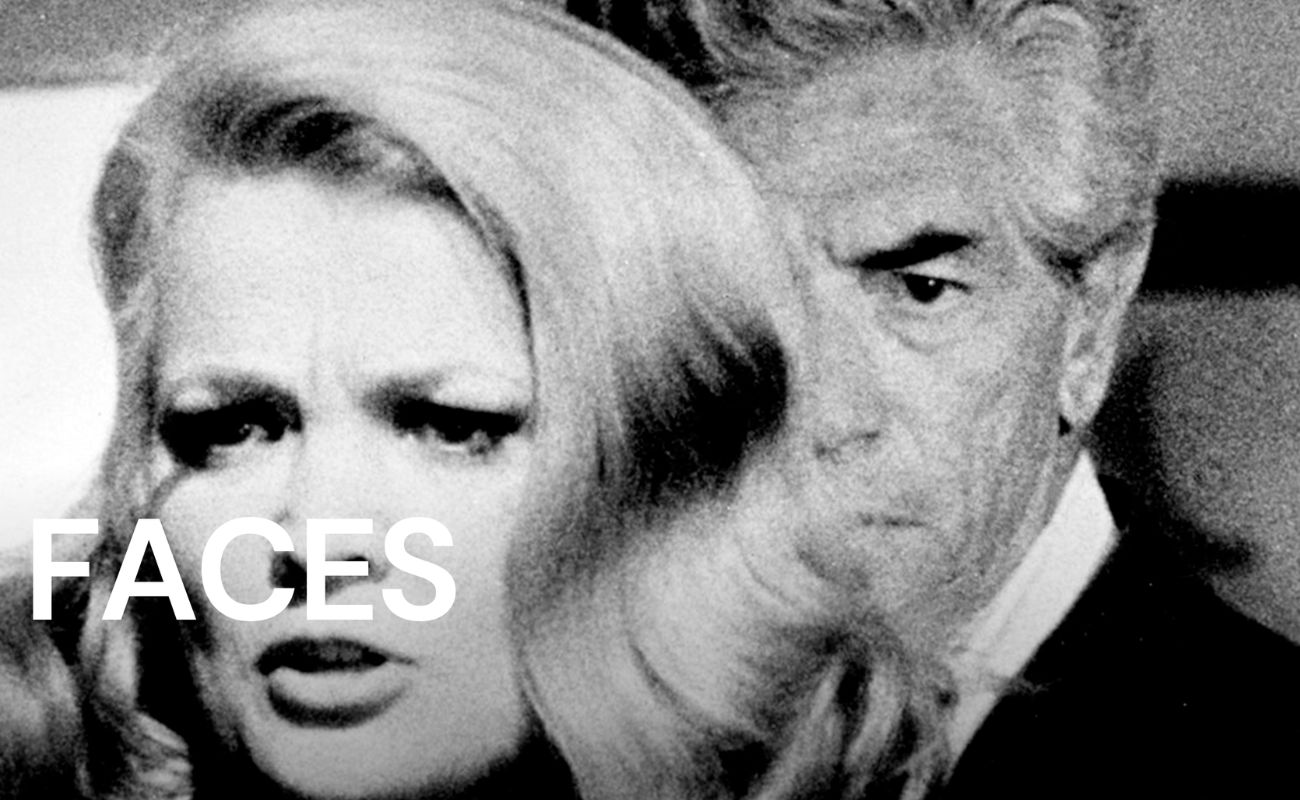
Welcome to the fascinating world of film trivia! In this article, we will take a deep dive into the mesmerizing movie, Faces. Released in [year], Faces is a critically acclaimed film that has captivated audiences with its unique storytelling and exceptional performances. Directed by [director’s name], this masterpiece has left an indelible mark on the world of cinema, earning its rightful place among the all-time greats. Join us as we uncover 48 intriguing facts about the making of Faces, from interesting behind-the-scenes tidbits to lesser-known details about the cast and crew. So sit back, relax, and prepare to be dazzled by the secrets and trivia behind this cinematic gem.
Key Takeaways:
- “Faces” is a groundbreaking 1968 movie exploring complex relationships in suburban Los Angeles. Shot in black and white, it challenges traditional notions of love and marriage through raw, improvised storytelling.
- This independent film, directed by John Cassavetes, delves deep into human emotions and societal expectations within marriage. Its raw, unfiltered portrayal continues to inspire filmmakers and provoke discussions about the complexities of relationships.
“>Faces” is a 1968 movie directed by John Cassavetes.
This groundbreaking film explores the complex and often turbulent relationships of married couples living in suburban Los Angeles.
The movie was shot in black and white.
This decision was made to enhance the raw and gritty nature of the storyline.
“Faces” is known for its improvisational style of filmmaking.
Many of the scenes were developed through collaboration between the actors and the director.
John Marley and Gena Rowlands play the lead roles in the movie.
Their performances are acclaimed for their depth and vulnerability.
The movie delves into themes of love, marriage, and identity.
It challenges conventional notions of relationships and explores the complexities of human emotions.
“Faces” was nominated for three Academy Awards.
It received nominations for Best Supporting Actor, Best Supporting Actress, and Best Original Screenplay.
The movie was a critical success but a commercial failure.
Despite its praise from critics, “Faces” struggled to find a wide audience at the time of its release.
The film is often regarded as a defining work of independent cinema.
Its bold and unconventional approach paved the way for future filmmakers to experiment with storytelling techniques.
John Cassavetes wrote the screenplay for “Faces” himself.
He drew inspiration from his own experiences and observations of relationships.
The movie captures the intensity of emotions through its realistic and honest portrayal.
It doesn’t shy away from showcasing the raw and unfiltered aspects of human behavior.
“Faces” was shot on a shoestring budget.
Cassavetes funded the film using his own money and resources.
The movie was initially intended to be a stage play.
However, Cassavetes decided to adapt it into a film to provide a more immersive experience.
The cinematography of “Faces” is characterized by its handheld camera work.
This technique adds a sense of immediacy and intimacy to the storytelling.
The movie explores the complexities of gender roles and societal expectations within marriage.
It challenges traditional patriarchal norms and raises questions about the nature of power dynamics.
“Faces” was selected for preservation in the United States National Film Registry.
This recognition signifies its cultural, historical, and aesthetic significance.
The film’s improvised dialogue lends an authentic and naturalistic feel to the performances.
It creates a sense of spontaneity and captures the essence of human interaction.
“Faces” was a product of the independent film movement of the 1960s.
It showcased a desire for artistic freedom and a departure from mainstream Hollywood productions.
The movie presents a non-linear narrative structure.
The story unfolds in a fragmented manner, reflecting the complexity of human relationships.
The performances in “Faces” are marked by their emotional intensity.
The actors delved deep into their characters, creating nuanced and memorable portrayals.
The film’s raw and unfiltered depiction of marriage was considered controversial at the time.
It challenged societal norms and provoked discussions about the state of modern relationships.
“Faces” has inspired numerous filmmakers and artists.
Its innovative approach and exploration of human emotions have left a lasting impact on the industry.
The movie features a diverse range of characters, each grappling with their own personal struggles.
It delves into the complexities of human existence and showcases the universal nature of emotions.
“Faces” received widespread critical acclaim upon its release.
Critics praised its raw honesty, powerful performances, and thought-provoking themes.
The movie delves into the dark underbelly of suburban life.
It exposes the facade of happiness and reveals the inner turmoil hidden beneath the surface.
“Faces” is an example of auteur filmmaking.
John Cassavetes had complete creative control over the project, resulting in a highly personal and distinctive vision.
The film explores the boundaries of monogamy and fidelity.
It challenges traditional notions of marital commitment and raises questions about the nature of love.
“Faces” was critically acclaimed for its realistic and immersive sound design.
It added another layer of authenticity to the film’s portrayal of human emotions.
The movie portrays the complexities of communication within relationships.
It highlights the discrepancies between what is said and what is truly meant.
“Faces” raises existential questions about the meaning and purpose of life.
It encourages viewers to reflect on their own existence and the choices they make.
The film’s unconventional narrative structure can be challenging for some viewers.
It requires active engagement and interpretation to fully appreciate its depths.
The movie’s title, “Faces,” symbolizes the masks people wear in their daily lives.
It represents the dichotomy between our public personas and our true selves.
“Faces” is a powerful portrayal of human vulnerability and the fragility of relationships.
It reminds viewers of the imperfections and complexities that make us human.
The film’s use of long takes and extended scenes adds to its sense of authenticity and realism.
It allows for a deeper immersion into the characters’ lives and experiences.
“Faces” explores the societal expectations placed on women within the context of marriage.
It challenges the notion of female subservience and presents strong, complex female characters.
The movie’s ambiguous ending leaves room for interpretation and discussion.
It invites viewers to draw their own conclusions about the characters’ fates.
“Faces” is a testament to the power of independent filmmaking.
Its raw and unflinching portrayal of human relationships resonates with audiences to this day.
The film’s intimate and personal approach creates a sense of empathy and connection.
Viewers are drawn into the characters’ emotional journeys and their struggles.
“Faces” was praised for its authentic depiction of human sexuality.
It portrays intimacy and desire with a rare honesty, breaking away from the usual Hollywood tropes.
The movie explores the impact of societal pressure on individual choices.
It raises questions about the influence of external expectations on personal happiness.
“Faces” is considered a landmark of American independent cinema.
Its influence can be seen in subsequent films that tackle similar themes and adopt a similar improvisational style.
The film’s natural lighting adds to its raw and realistic aesthetic.
It enhances the sense of authenticity and creates a more immersive viewing experience.
“Faces” is an emotionally intense and thought-provoking film.
It forces viewers to confront their own fears, desires, and insecurities.
The movie’s dialogue is marked by its nuanced and layered subtext.
It reveals deeper truths about the characters and their relationships.
“Faces” showcases the complexity of human emotions and the capacity for both love and cruelty.
It provides a nuanced exploration of the human condition.
The film’s editing style is characterized by its rhythmic and fragmented structure.
It adds to the overall tension and unpredictability of the storytelling.
“Faces” challenges traditional Hollywood narrative conventions.
It subverts expectations and confronts audiences with uncomfortable truths.
The movie’s powerful performances and raw emotion are its greatest strengths.
It leaves a lasting impact on viewers, forcing them to reflect on their own lives and relationships.
“Faces” continues to be studied and analyzed by film scholars and enthusiasts.
Its enduring legacy reaffirms its status as a significant and influential piece of cinema.
Conclusion
In conclusion, “Faces” is a cinematic masterpiece that pushed the boundaries of storytelling and challenged traditional filmmaking norms. With its raw and unflinching portrayal of human emotions, the movie offers a deeply introspective journey for viewers. From the masterful direction of John Cassavetes to the exceptional performances of the cast, “Faces” remains a timeless and influential piece of cinema. Its thought-provoking exploration of themes such as love, identity, and societal expectations continues to resonate with audiences, making it a must-watch for any film enthusiast. Whether you are a fan of independent cinema or simply appreciate the power of storytelling, “Faces” is a remarkable film that deserves all the praise it has received over the years.
FAQs
1. Who directed the movie “Faces”?
John Cassavetes directed the movie “Faces”.
2. When was “Faces” released?
“Faces” was released in 1968.
3. What is the genre of “Faces”?
“Faces” is a drama film.
4. Who are the main actors in “Faces”?
The main actors in “Faces” include John Marley, Gena Rowlands, and Lynn Carlin.
5. How long is the runtime of “Faces”?
The runtime of “Faces” is approximately 2 hours and 10 minutes.
6. Has “Faces” won any awards?
Yes, “Faces” was critically acclaimed and won several awards, including three nominations at the Academy Awards.
7. Is “Faces” suitable for all audiences?
“Faces” contains mature themes and explicit content, so it is recommended for adult audiences.
8. Is “Faces” based on a true story?
No, “Faces” is not based on a true story. It is a fictional narrative created by John Cassavetes.
9. Where can I watch “Faces”?
Faces” is available for streaming on various streaming platforms and can also be found on DVD and Blu-ray.
10. What makes “Faces” a must-watch film?
Faces” is a must-watch film for its groundbreaking approach to storytelling, exceptional performances, and its ability to provoke deep emotional reflections in viewers.
Was this page helpful?
Our commitment to delivering trustworthy and engaging content is at the heart of what we do. Each fact on our site is contributed by real users like you, bringing a wealth of diverse insights and information. To ensure the highest standards of accuracy and reliability, our dedicated editors meticulously review each submission. This process guarantees that the facts we share are not only fascinating but also credible. Trust in our commitment to quality and authenticity as you explore and learn with us.


